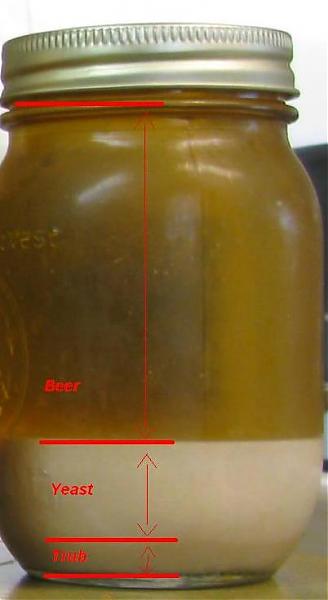BAK6E
Member
I'm going to make a video of the yeast washing process (inspired by this thread) that might be useful to some people. I have discovered a couple tricks that I like to use that simplify the process just a little... I have a WLP-001 California Ale yeast fermenting a batch of beer right now that I plan to rack off over the weekend (probably Sunday).
1. I boil a gallon of water and put it in a sanitized glass jar in the fridge at least overnight.
2. I rack my beer from primary to secondary fermenter. I generally ferment in a plastic bucket with no drain tap. I rack to a 5 gallon glass carboy for a secondary most of the time.
3. I scoop about half of the trub from the primary into a sanitized bottling bucket with a spigot.
4. I add my gallon of chilled water that has been boiled and swirl it around and let it sit for about 5 minutes.
5. I run about 1/2 gallon out of the bottling bucket spigot back into my gallon jar that has been resanitized during the 5 minute wait.
6. I let that sit for 5-7 minutes to let some more solids settle to the bottom.
7. I slowly pour the suspension into my jars (or leftover White Labs vials) that have been sanitized, cap them, and put them in the refrigerator.
This method doesn't vary significantly from the original poster's method, but employing the bottling bucket makes it a little easier to extract the sample. It also creates another item that has to be cleaned up. I also prefer sanitizing my glass containers with Star San rather than boiling them.
Does anyone think a video of this process would be of any use?
I'd love to see a video of this. I'm more of a visual learner myself. I've got an APA fermenting right now and would like to harvest the yeast from it this weekend.







































![Craft A Brew - Safale BE-256 Yeast - Fermentis - Belgian Ale Dry Yeast - For Belgian & Strong Ales - Ingredients for Home Brewing - Beer Making Supplies - [3 Pack]](https://m.media-amazon.com/images/I/51bcKEwQmWL._SL500_.jpg)





















